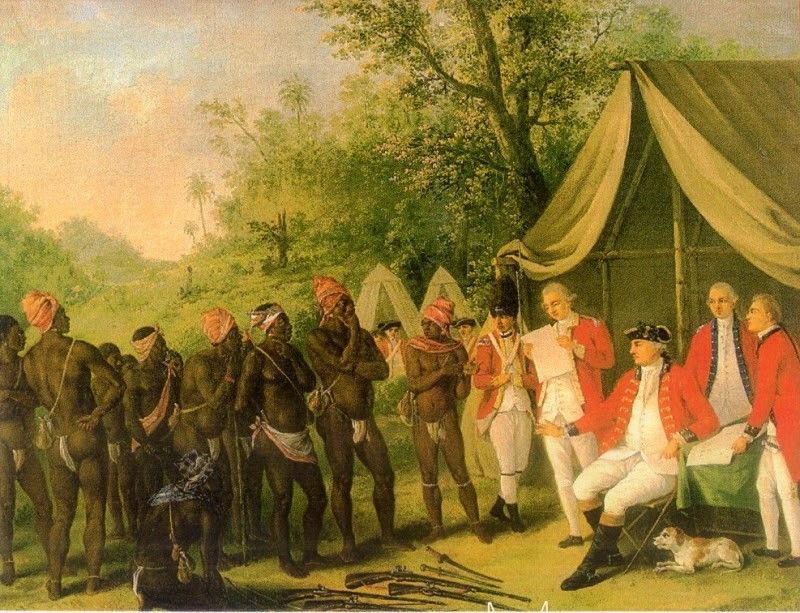Belinda Royall presented a petition to the Massachusetts General Assembly requesting pension from the proceeds of her master’s estate because it was the product of her own uncompensated labor in 1783.
Special Field Order No. 15 (1865) military order issued during the Civil War on January 16, 1865 by General William Tecumseh Sherman issuing 40 acres of land to freed people. [See Here]
Henrietta Wood, a free Black woman, successfully sued for reparations from her kidnapper who had sold her into slavery illegally in 1870.
Callie House and Isiah Dickerson organized the National Ex-Slave Mutual Relief, Bounty and Pension Association with the goal of providing compensation to formally enslaved Africans, mutual aid, and burial costs in 1898.
Marcus Garvey saw the redemption of Africa as recompense for the exploitation of African people; He petitioned the League of Nations to turn over the former German colonies in Africa to the UNIA in 1919.
The Peace Movement of Ethiopia petitioned President Franklin Roosevelt and the Virginia legislature in 1930s for reparations.
Paul Roberson, William Patterson, and W.E.B. Du Bois launched the 1951 Genocide Campaign that included a call for repair and reparations in 1951.
Robert Brock in 1956 formed the Self-Determination committee in Los Angeles, CA which advocated for reparations for over 40 years.
Queen Mother Audley Moore appealed to the UN in 1957 and 1959 into 1962 for reparations for African Americans.
Republic of New Afrika – called for a separate black nation in southeastern US (organized by Imari Obadele and his Malcolm X Society) and $400 billion in slavery damages in 1968
African American Repatriation League appealed for support for blacks to emigrate to Africa as compensation for slavery
Martin Luther King Jr. called for reparations in 1963 and 1964 through a “Bill of Rights for the Disadvantaged” – “The moral justification for special measures for Negroes is rooted in slavery.”
Black Panther Party was formed and issued a call for reparations as part of its 10-Point Program in 1966.
Republic of New Afrika was formed with a demand for land to create a separate government composed of the “Black Belt” states in the souther U.S. and several billions of dollars in 1668.
Black National Economic Conference issued the Black Manifesto with a demand for reparations from churches in 1969.
National Coalition of Blacks for Reparations in America was formed and began the contemporary reparations movement.
Whitney Young of the Urban League suggested a Marshall Plan for African Americans.
James Forman former executive director of SNCC in May 1969 targeted religious institutions in the Black Manifesto; he demanded $5 billion in reparations from white Christian churches and Jewish synagogues – some white Protestant churches increased their annual contributions to Black organizations by $1 million
John Conyers introduced HR40 bill in 1989
NCOBRA’S founding meeting, September 26, 1987, was convened for the purpose of broadening the base of support for the long-standing reparations movement. Organizational founders of N’COBRA include the National Conference of Black Lawyers, the New Afrikan Peoples Organization, and the Republic of New Afrika. N’COBRA has individual members and organizational affiliates.
The first Pan African Conference on Reparations was held in Abuja, Nigeria in 1993.
Lost and Found Nation of Islam under the leadership of Silas Muhammad petitioned for a UN hearing on Reparations.
History of Black Americans suing for reparations
- 1995 Cato v. U.S.
- 2002, Imari Obadele (Republic of New Afrika) won an indirect consideration of the legality of reparations in the federal court of claims; Obadele v. U.S.
- 2002, Deadria Farmer-Paellmann sued Aetna Insurance Company, Fleet Boston Financial (successor of Providence Bank founded by Rhode Island businessman/slave trader John Brown), and the CSX Railroad; the claim alleged that these companies conspired with slave traders and illegally profitted from slavery
History of Black Americans being paid reparations
Rosewood survivors and descendants paid by FL
Timothy Pigford (black farmers) vs. USDA – $1.25 billion in 1999; Pigford II case as well
North Carolina passed an appropriations bill to give compensation, up to $50,000 per person, to individuals sterilized under the authority of the Eugenics Board of North Carolina
History of reparations being recommended to Black Americans
1997 – Oklahoma Commission to Study the Tulsa Riots of 1921
2005 – Virginia and private donations provided scholarships to pursue higher education to African Americans whose public schools were closed in Prince Edward County after Brown V. Board
2006 – commission recommended reparations be paid to descendants of Black people killed in a riot that destroyed Black homes and businesses in 1898 in Wilmington, NC; the legislature refused
History of Reparations Internationally
2001 The World Conference Against Racism, Racial Discrimination, Xenophobia and Related Intolerance in Durban, South Africa
Present day mobilizing for reparations in:
U.S., Caribbean (CARICOM), South America, Various countries in Africa and in 2016, the United Nations Working Group of Experts on People of African Descent 2016 call for reparations
History of White people getting paid reparations
Haiti to France
Former slave owners in British empire
Former slave owners in D.C.
History of reparations to non-Black people
In 1948, a law provided compensation for property damage as a result of evacuation for Japanese Americans during WWII. The Justice Department received about 26,500 claims and the federal government paid out approximately $37 million. Congress passed the Civil Liberties Act of 1988 providing for a formal apology and benefits including redress payments of $20,000 to citizens and permanent residents of the U.S. interned during WWII. It established an Office of Redress Administration in the Civil Rights Division of the Justice Department to administer it.
